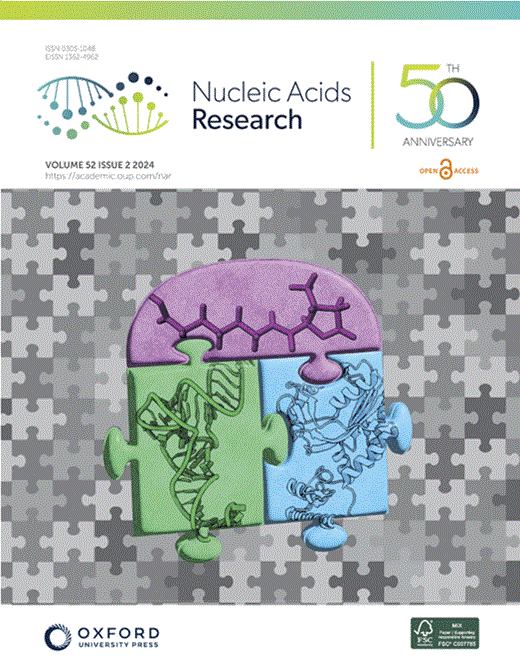内源性逆转录病毒元件协同上游调控序列实现体细胞表达和迁移
IF 16.6
2区 生物学
Q1 BIOCHEMISTRY & MOLECULAR BIOLOGY
引用次数: 0
摘要
反转录转座子是一种通过复制-粘贴机制传播的多拷贝序列,占据了真核生物基因组的很大一部分。它们的大部分拷贝在体细胞中保持沉默;尽管如此,一些被转录,通常以组织特异性的方式,和一小部分保留其动员能力。虽然众所周知,逆转录转座子序列可能为邻近基因提供顺式调控元件,但它们自己的表达和迁移是如何实现的还不是很清楚。在这里,使用长读DNA测序,我们表征了果蝇肠道中的体细胞反转录转位。我们发现逆转录因子的迁移不随年龄的增长而发生显著变化,并且仅限于极少数活跃的亚家族。重要的是,我们确定了在肠道组织中活跃的内源性LTR(长末端重复)逆转录病毒元件漫游器的供体位点。我们发现,肠道活动的漫游者供体拷贝取决于它的基因组环境。在不影响局部基因表达的情况下,拷贝选择其上游基因组序列,丰富的转录因子结合位点,用于体细胞表达。此外,我们发现蜗牛型转录因子escargot可以驱动活跃的漫游者拷贝的转录活性。这些数据为基因座特异性特征如何允许活性反转录转座子在体细胞谱系中产生功能性转录物和动员提供了新的见解。本文章由计算机程序翻译,如有差异,请以英文原文为准。
An endogenous retroviral element co-opts an upstream regulatory sequence to achieve somatic expression and mobility
Retrotransposons, multi-copy sequences that propagate via copy-and-paste mechanisms, occupy large portions of eukaryotic genomes. A great majority of their manifold copies remain silenced in somatic cells; nevertheless, some are transcribed, often in a tissue-specific manner, and a small fraction retains its ability to mobilize. While it is well characterized that retrotransposon sequences may provide cis-regulatory elements for neighboring genes, how their own expression and mobility are achieved is not well understood. Here, using long-read DNA sequencing, we characterize somatic retrotransposition in the Drosophila intestine. We show that retroelement mobility does not change significantly upon aging and is limited to very few active sub-families. Importantly, we identify a donor locus of an endogenous LTR (long terminal repeat) retroviral element rover, active in the intestinal tissue. We reveal that gut activity of the rover donor copy depends on its genomic environment. Without affecting local gene expression, the copy co-opts its upstream genomic sequence, rich in transcription factor binding sites, for somatic expression. Further, we show that escargot, a snail-type transcription factor, can drive transcriptional activity of the active rover copy. These data provide new insights into how locus-specific features allow active retrotransposons to produce functional transcripts and mobilize in a somatic lineage.
求助全文
通过发布文献求助,成功后即可免费获取论文全文。
去求助
来源期刊

Nucleic Acids Research
生物-生化与分子生物学
CiteScore
27.10
自引率
4.70%
发文量
1057
审稿时长
2 months
期刊介绍:
Nucleic Acids Research (NAR) is a scientific journal that publishes research on various aspects of nucleic acids and proteins involved in nucleic acid metabolism and interactions. It covers areas such as chemistry and synthetic biology, computational biology, gene regulation, chromatin and epigenetics, genome integrity, repair and replication, genomics, molecular biology, nucleic acid enzymes, RNA, and structural biology. The journal also includes a Survey and Summary section for brief reviews. Additionally, each year, the first issue is dedicated to biological databases, and an issue in July focuses on web-based software resources for the biological community. Nucleic Acids Research is indexed by several services including Abstracts on Hygiene and Communicable Diseases, Animal Breeding Abstracts, Agricultural Engineering Abstracts, Agbiotech News and Information, BIOSIS Previews, CAB Abstracts, and EMBASE.
 求助内容:
求助内容: 应助结果提醒方式:
应助结果提醒方式:


